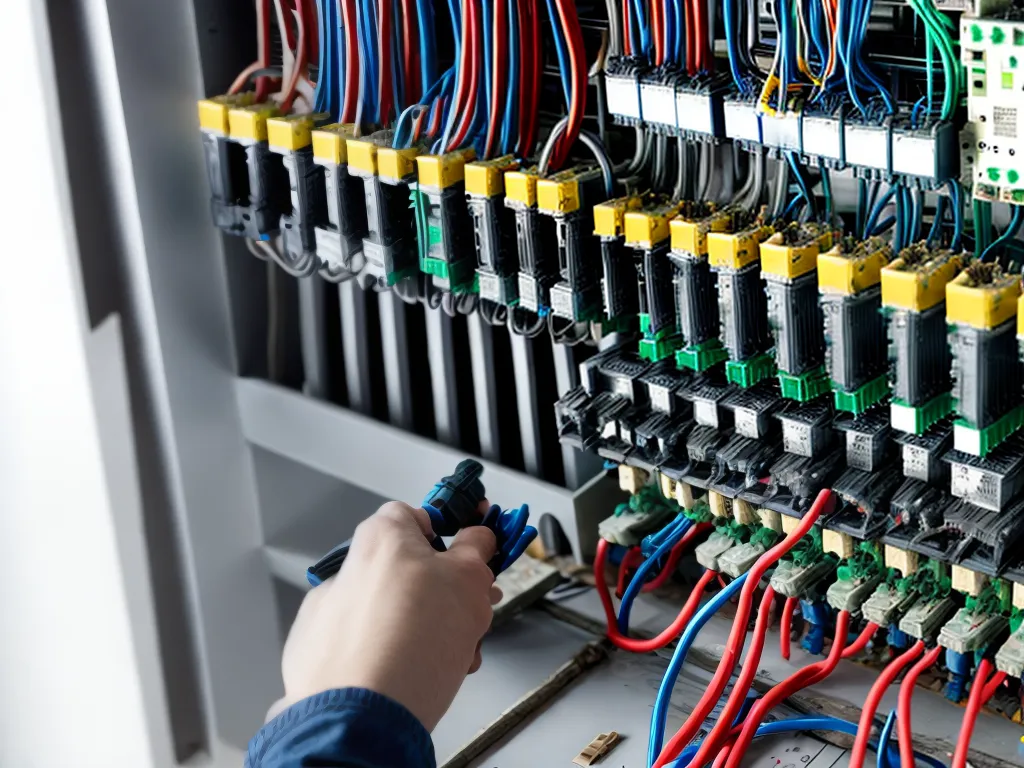
Electrical panels are the central nervous systems of any commercial building. They distribute power from the electrical service to all the branch circuits in the facility. Like any complex system, issues can arise that create power disruptions or even fire hazards. That's why every facility manager needs to know how to properly troubleshoot electrical panels when problems occur.
Step 1: Visually Inspect the Panel
The first step is a visual inspection of the electrical panel itself. Look for any signs of:
- Overheating - Discolored wires, melted insulation, or scorch marks indicate overheating components. This is a serious fire hazard.
- Corrosion - Rust, green deposits, or white powder indicate moisture penetration. This can cause shorts, arcing, and component failure.
- Loose connections - Any wires not securely fastened indicate loose connections. This can create heat buildup and shorts.
- Rodent damage - Look for any signs of chewed wires, nesting materials, or feces. Rodents can chew through insulation and short out connections.
Any of these visual issues need to be corrected before proceeding with further troubleshooting. Call an electrician immediately if there are signs of overheating or arc damage.
Step 2: Check the Breakers/Fuses
The next step is verifying that all the breakers/fuses are in the on position and not tripped. Switch any tripped units to the off position and then back on again to reset them. If the breaker immediately trips again, there may be a short circuit on that branch circuit.
Pay attention to which specific breakers trip repeatedly. This narrows down the circuits affected by the issue.
Step 3: Test the Voltage
Use a multimeter to check the incoming voltage to the electrical panel. Reference the nameplate on the panel for the correct input voltage (typically 120/240V in a commercial building).
Low voltage indicates a problem with the utility feed or main disconnect. Contact the electric utility immediately.
High voltage is also dangerous and can damage sensitive electronics. Check with the utility to verify the correct service voltage.
Step 4: Check All Neutral Connections
Loose neutral wires are a common but potentially hazardous issue in electrical panels. Shut off the main breaker and remove the panel cover.
Check each individual neutral wire to ensure it is securely fastened. Loose neutral connections can intermittently short out branch circuits.
Step 5: Isolate Affected Circuits
If the issue only affects some lights or outlets, methodically isolate those branch circuits. Turn off individual breakers and see if the problem goes away.
When you've identified the affected circuit, inspect all outlets, switches, junction boxes, and devices for any damage, improper wiring, or loose connections.
Step 6: Turn Off Main Breaker
If the issue cannot be isolated to individual branch circuits, completely shut down the panel by turning off the main breaker. Then systematically turn on sets of breakers to gradually restore power in sections.
Monitor lights and equipment closely to detect any breakers that seem to worsen the issue when turned back on. This further isolates the problem.
Step 7: Call an Electrician
For any persistent or recurring issues that cannot be identified through basic troubleshooting, contact a certified electrician. Electrical problems can lead to equipment damage or fire if left unresolved.
Professional electricians have the advanced tools, expertise, and certifications to fully evaluate and repair commercial electrical panels. Safety should always take priority.
Preventative Maintenance
To minimize electrical issues, have a qualified electrician conduct preventative maintenance annually. This can reveal and correct problems before they lead to disruptions.
Thermographic inspections, wire integrity tests, breaker testing, and torqueing all connections can identify issues early. A clean, tight, and well-maintained panel will have fewer problems over its service life.
Following these troubleshooting steps when issues do arise will help restore power safely and efficiently. But reaching out to professional electricians is crucial for any complex or dangerous electrical problems.